

Civic Fountains
The two civic fountains of Narni were fed by the Acquedotto della Formina (24 - 33 AD) (see the page on Ponte Cardona).
Fountain in Piazza Garibaldi (1527)
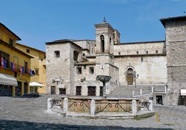
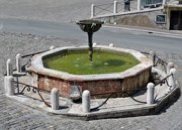
This fountain was rebuilt after the sack of Narni in 1527. It stands next to the medieval cistern that was built over a Roman cistern (1st century AD) that was fed by the aqueduct. Both the cistern and the aqueduct can be visited by prior arrangement with Narni Sotterranea.
Fountain in Piazza dei Priori (1303)
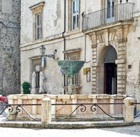
This fountain, which was designed originally for the small piazza in front of San Salvato, was restored in 1998, at which time its original bronze basin was moved to the Museo della Città e del Territorio. The inscription on this basin, which became apparent during its restoration, gives the date of construction of the fountain and records it as the work of Marcuccio di Todi and Giovanni di Marco. It also names the Podestà Francesco d’ Alviano and a number of Consuls: Pellegrino, Tello, Somarucio, Gianni, Aniballo and Giovenale. The six protruding cats’ heads under the lip of the basin acted as water spouts, and reliefs of the arms of Narni were sculpted between them.
Although the upper basin in Piazza del Priori is a replica, the other components of the fountain are original:
-
✴the central column has four more water spouts, three depicting lions’ heads and the fourth the head of a bull; and
-
✴the lower basin is in the form of a twenty-sided polygon.
Sorgente di Feronia
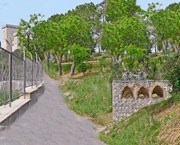
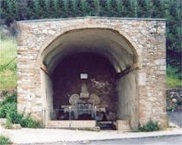
The conduit (4th or 3rd century BC) that carries water from an underground stream to the present fountain is all that survives of what must have been a cult site dedicated to the Sabine goddess Feronia, the protectress of waters and woods.
The earliest surviving documentary reference to the site dates to 1100, when a certain Beraldo di Rolando gave what was described as “maccla mortua quae vocatur Ferone” (the place of the dead woman known as Ferone) to the Abbazia di Farfa. This suggests a surviving memory of the ancient dedication.
The outer structure seems to have been built in the 13th century and was restored in 1582. An inscription on the left wall records the rebuilding of the fountain itself in 1609.





